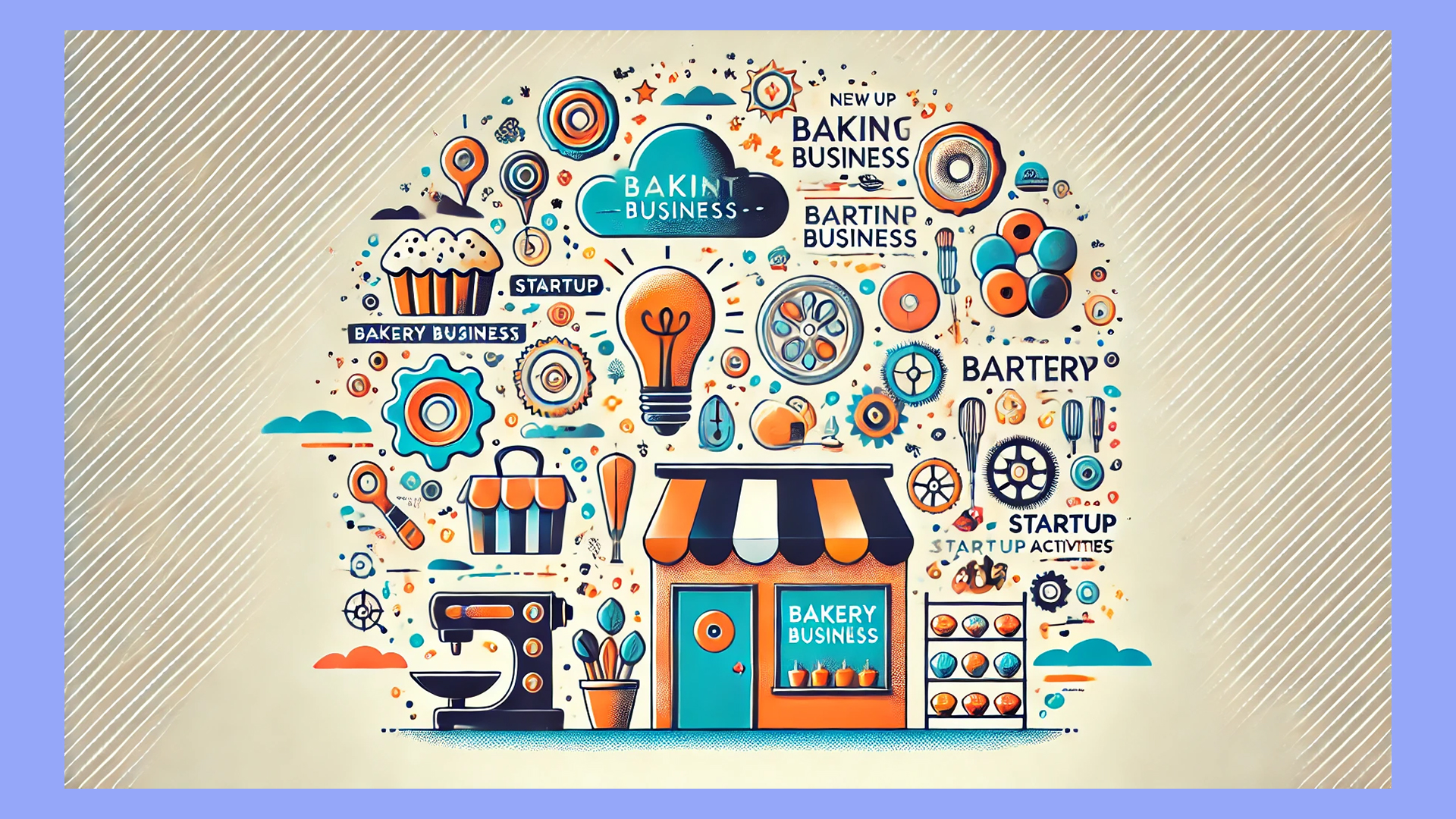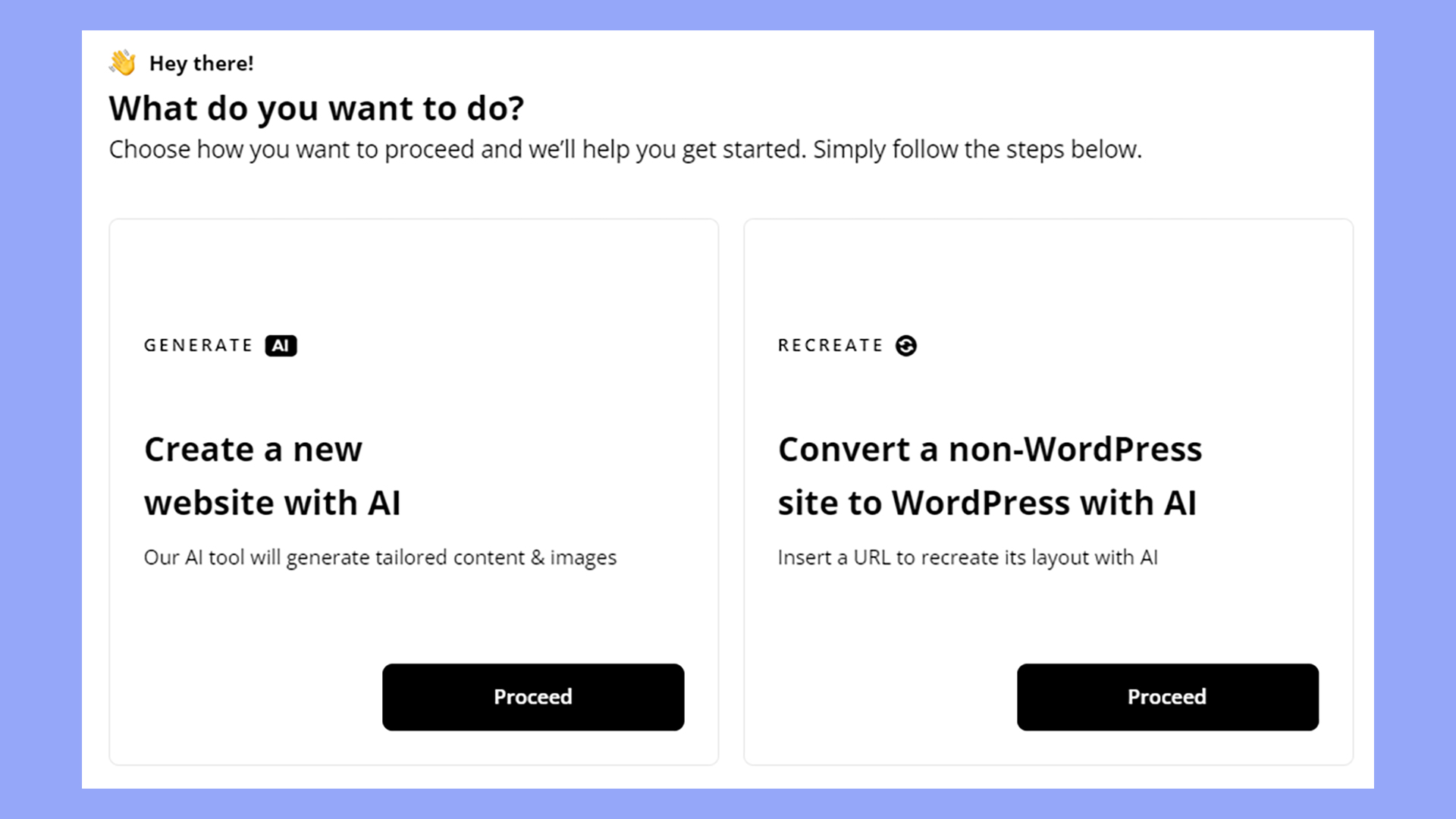Do you dream of owning a bakery? Learning how to start a baking business can turn that dream into a delicious reality. This guide will walk you through essential steps like understanding regulations, market research, business planning, and securing the right licenses. Let’s start this sweet journey together and lay the foundation for your successful bakery venture.
FAQ
How profitable is a baking business?
A baking business can be profitable, especially if you specialize in unique, high-demand products. Profit margins can be significant due to the relatively low cost of ingredients compared to the selling price. Consistent quality, efficient operations, and good marketing can enhance profitability.
Can I start a bakery with no money?
Starting a bakery with no money is challenging but possible. You can begin by using your home kitchen, borrowing equipment, and leveraging social media for marketing. Crowdfunding, small loans, or partnerships might also help you raise initial funds. Starting small and reinvesting profits can gradually grow your business.
How do I start a successful baking business?
To start a successful baking business, perfect your recipes and ensure consistent quality. Create a solid business plan, understand your target market, and comply with local regulations. Effective marketing, excellent customer service, and continuous innovation are key to long-term success.
Do home bakeries make money?
Yes, home bakeries can make money. Many home bakers find success by specializing in niche products, offering personalized services, and leveraging social media for marketing. Keeping overhead costs low by working from home and using efficient production techniques can help maximize profits.

Looking to sell online?
Create your custom online store in minutes with 10Web AI Ecommerce Website Builder and take your business online.
Stage 1: Starting a baking business
Starting a baking business begins with understanding regulations, researching your market, and creating a solid business plan. You must focus on each of these steps to ensure your business is on the right track from day one.

Step 1. Understanding bakery regulations and compliance
You need to know the key regulations and compliance requirements before starting your baking business. The first step is to get permits and licenses. Depending on your location, you might need a local business license, health department permit, and zoning approval.
Cottage food laws are another important aspect. These laws allow homebakers to sell their goods while operating from their home kitchen. Check with your state for specific rules about what you can bake and sell from home.
Food safety certifications are crucial. They ensure that you are following safe food handling practices. Enroll in a food safety course to learn about hygiene, proper storage, and preventing contamination.
Step 2. Market research for a baking business
Conducting thorough market research is essential to identify opportunities and avoid pitfalls when starting a baking business. Start by analyzing your target market. Who are your potential customers? Look at their demographics, preferences, and spending habits.
Once you know your target audience, the next step is to find your niche. This could specialize in gluten-free goods, vegan treats, or artisanal bread. A clearly defined niche helps you stand out in the crowded baking market.
Use surveys and competitor analysis to gauge demand and identify gaps in the market. Understanding what works and what doesn’t can save you time and money.
Step 3. Creating your business plan

A detailed business plan is crucial for success. It acts as a roadmap and helps secure funding if necessary. Start with a clear mission statement that defines your business’s purpose and goals.
Outline your market analysis, detailing your target market, competitors, and unique selling proposition. This section shows that you have done your homework and understand the market landscape.
Include an operations plan covering daily activities, staffing needs, and production processes. Finally, add financial projections. Estimate your startup costs, revenue, and expenses to provide a clear financial roadmap for your business.
Step 4. Legal and administrative setup
Setting up the legal and administrative aspects of your baking business is crucial. You’ll need to secure the right licenses and permits, choose the appropriate business structure, and ensure your business is well-insured.
Securing necessary licenses and permits
To start a bakery business, you must get the necessary licenses and permits. First, apply for a business license from your local government. This allows you to operate legally in your area.
Next, you may need a health permit. This ensures your bakery meets health and safety standards. Contact your local health department for specific requirements.
Check if you need a sales tax permit. This is especially important if you plan to sell goods directly to customers. Also, remember to secure any additional permits specific to baked goods, like a food handler’s permit.
Choosing your business structure
Choosing the proper business structure is important for your bakery’s success. You might consider a sole proprietorship for your baking business, which is easy to set up and gives you control. However, it doesn’t offer personal liability protection.
An LLC (Limited Liability Company) could be a better option. It provides liability protection, meaning your personal assets are safe if your bakery business faces legal issues. An LLC also offers tax benefits.
If you plan to expand, consider forming a corporation. Though more complex, it allows for easier capital raising and scalability. Consulting a lawyer can help you make the best choice for your specific situation.
Insuring your baking business
Business insurance is vital to protect your bakery from unforeseen events. General liability insurance covers accidents that happen on your premises and any damages your products might cause.
You might also need property insurance. This covers damage to your bakery’s physical space and equipment. If you have employees, consider getting workers’ compensation insurance. It covers medical expenses if an employee gets injured at work.
Other important coverages include product liability insurance and business interruption insurance. These help protect against claims related to your baked goods and cover lost income if your baking business closes temporarily. Always consult with an insurance agent to find the best policies for your bakery.
Step 5. Financial planning to start a baking business
You need to plan your finances carefully as you start your baking business. This includes figuring out how much it will cost to start, where to get funding, and making financial projections for your sales.
Calculating startup costs
To start a baking business, you will need to figure out the initial costs. These include expenses like buying or leasing a storefront, purchasing baking equipment, ingredients, marketing materials, and hiring staff for your bakery’s day-to-day operations.
Examples of startup costs:
- Lease: $2,000 per month
- Ovens and mixers: $10,000
- Ingredients: $500
- Business licenses: $200
- Marketing: $1,000
Add up all these costs to determine the amount of money you will need to launch your baking business. Creating a detailed list will help ensure you have everything covered.
Exploring funding options
Once you know your startup costs, you need to find ways to get the money. Common funding options include personal savings, loans, finding investors, and crowdfunding. Personal savings are the easiest but may not be enough.
Funding sources:
- Loans: Banks may offer small business loans.
- Investors: You can look for people willing to invest in your business.
- Crowdfunding: Platforms like Kickstarter can help you raise money from the public.
Choose the best funding option or combination that suits your bakery’s needs and situation.
Sales forecast and financial projections
Estimating your potential sales is essential to understanding how your baking business will perform financially. Make a sales forecast by predicting how much you will sell in the first six months to a year.
Steps to make financial projections:
- Estimate daily sales based on your prices and expected number of customers.
- Multiply daily sales by the number of days in a month.
- Deduct monthly expenses like rent and salaries from your projected monthly sales.
This will give you an idea of your expected profit or loss. Be realistic with your numbers to avoid future financial problems.
Step 6. Developing a compelling business name and logo
Your baking business name is the first impression customers will have, so it must be memorable and reflect your bakery’s identity.
Start by brainstorming words related to baking, your location, or your own name.
Once you have a list, combine words to create a unique name. Ensure it’s easy to pronounce and spell. Use online tools to check if the domain name is available for your website.

Looking to sell online?
Create your custom online store in minutes with 10Web AI Ecommerce Website Builder and take your business online.
For the logo, keep it simple and clean. If possible, hire a graphic designer or use online logo design tools.
Your logo should convey the essence of your bakery through relevant symbols like cakes, bread, utensils, and colors that evoke warmth and taste, often shades of brown or pastels.
Crafting your unique selling proposition
A unique selling proposition (USP) sets your baking business apart from the competition. Identify what makes your baked goods special.
It could be using organic ingredients, family recipes, or unique flavor combinations.
List these unique aspects. Analyze your competitors to ensure your USP is truly distinctive.
Once identified, weave this USP into all your marketing materials, including your website, social media, packaging, and even your storefront signage.
Ensure your USP is clear and concise so customers quickly understand why they should choose your bakery over others. For example, your USP could be “Home-baked goodness with organic ingredients” or “Decadent, custom cakes for every occasion.”
Use your USP consistently to build strong brand recognition.
Stage 2: Setting up your baking business
When setting up your bakery business, you must find a suitable location, decide whether to operate from a commercial space or your home, acquire the necessary equipment, and design the layout for both efficiency and customer appeal.

Step 1. Evaluating commercial spaces
First, choose a location that fits your business model. If you plan to open a retail baking business, visibility and foot traffic are crucial. High-traffic areas in busy neighborhoods can attract more customers to your storefront.
Check zoning regulations to ensure the area is approved for a bakery. Visit multiple spots and compare rents, amenities, and contract terms. Also, consider spaces that are already equipped for food businesses, which can save you time and money on renovations.
Considering a home baking business option
Home bakeries can be economical since you save on commercial rent. This is a viable option for small-scale operations or specialty baking.
Check local laws for home-based food businesses. You may need a home kitchen inspection and certain permits. Ensure your home setup can handle the required baking volume without affecting your living space. This option can be especially appealing for those starting on a tight budget or testing the market.
Step 2. Acquiring essential bakery equipment
To start baking efficiently, you’ll need oven(s), refrigerators, mixers, baking sheets, and other tools. Choosing the right commercial-grade equipment is essential for consistent quality and efficiency.
Make a list of everything you’ll need to avoid missing key items. When budgeting, consider buying used equipment in good condition to save money. Prioritize items that match your baking needs, whether it’s for a retail, wholesale, or home bakery setup.
Step 3. Designing the bakery layout and customer seating
Design your bakery layout to maximize workflow. Place equipment to ensure easy access and smooth operations. Workspace organization matters—keep your preparation area close to storage and washing areas to streamline tasks.
If you’re setting up a retail baking business, create a welcoming storefront. Customer seating can enhance their experience, so plan tables and chairs to fit the space. Ensure the seating area is clean and comfortable to encourage longer visits and higher sales.
Step 4. Product development
Creating a successful bakery begins with developing tasty products and using high-quality ingredients. In this section, you’ll learn how to design a diverse menu and source the best supplies for your baked goods.
Designing a delicious and diverse menu
To attract a wide range of customers, your menu should include a variety of baked goods on your bakery’s menu. Start with a mix of cakes, cookies, cupcakes, bread, pastries, pies, brownies, muffins, and tarts.
Consider offering both classic flavors and unique creations. A good balance between sweet and savory items also helps. To cater to different dietary needs, you could include gluten-free, vegan, or low-sugar options in your baking business.
Update your menu regularly based on seasonality and customer feedback. Special promotions or limited-edition items can create buzz and draw in more customers.
Sourcing quality ingredients and supplies
High-quality ingredients are crucial for producing delicious baked goods. Establish relationships with reliable suppliers who provide fresh and consistent products.
For better cost management, compare prices from different suppliers and consider buying in bulk. Always prioritize fresh ingredients, like real butter, high-quality chocolate, and fresh fruits.
Don’t forget about packaging materials. Beautiful packaging can enhance the appeal of your products. Invest in sturdy boxes for cakes or cute, branded bags for cookies and pastries.
An inventory checklist will help you track ingredients and supplies efficiently, ensuring you never run out of stock.

Looking to sell online?
Create your custom online store in minutes with 10Web AI Ecommerce Website Builder and take your business online.
Stage 3: Building and promoting your online presence
Establishing an online presence with a branded website and social media accounts opens a powerful marketing channel. You can attract business from an untapped source by identifying your target audience and creating tailored content to engage visitors and followers.
Step 1. Developing your online presence
Creating a strong online presence is key to attracting customers to your baking business. It involves finding the right website platform and building your business website effectively.
Purchasing a domain name
Choosing the right domain name for your baking business is crucial. It will be a key part of your brand identity and how customers find you online.
Ensure your domain name matches or closely resembles your business name to maintain consistency and brand recognition. Choose a name that’s easy to remember and spell.
If your baking business specializes in certain products, like cupcakes, artisan bread, or wedding cakes, consider incorporating that into the domain name.
Use relevant keywords that reflect your business, such as “bake,” “bakery,” “cakes,” “cupcakes,” etc. Shorter names are easier to remember and type. Avoid complex words or long strings of words. These can be confusing and hard to remember.
Check the availability of your desired domain name on domain registration sites like GoDaddy, Namecheap, or 10Web. Ensure the name is also available on major social media platforms to maintain consistent branding across all channels.

Tips for a great baking business domain name:
- Highlight what makes your baking business unique. For example, if you use organic ingredients, you might include “organic” in your domain.
- If your business is locally focused, including your city or region in the domain name can help attract local customers (e.g., “NYCBakes.com”).
- Play with words related to baking to create a catchy and unique name. For instance, “SweetCrumbs.com” or “BakeDelight.com”.
- Say the name out loud, write it down, and get feedback from friends or potential customers to ensure it resonates and is easy to communicate.
- If possible, choose a .com TLD as it is the most recognized and trusted by consumers. Consider baking-related TLDs like .bakery, .kitchen, or .cafe if .com is unavailable.
Finding the right website platform
Choosing the right website platform is crucial when starting your baking business’ online presence. Depending on your needs, there are many options available.
Decide whether you want an ecommerce site to sell products or an informational site to showcase your work.
Popular options:
- Shopify: Great for ecommerce with user-friendly tools and templates.
- WordPress: Highly customizable with numerous plugins, ideal for both informational and ecommerce needs.
- Squarespace: Offers sleek, modern templates perfect for showcasing baked goods.
Consider factors such as ease of use, cost, and available features. Look for a platform that supports SEO optimization, mobile responsiveness, and secure payment gateways. This will ensure your website is accessible and secure for customers.
Building your baking business website
Once you’ve chosen a platform, it’s time to build your baking business website site. There are many ways to build a website and set up web hosting at all skill levels and price points. Choosing a website platform and hosting that offers easy-to-use features and tools for building and managing websites makes a big difference.
For example, 10Web allows you to create a professional-quality website and automatically optimize it for performance. You can also use AI to create a new website from scratch or convert any website to WordPress.

Here’s how it works:
- Describe your baking business: Tell the AI Website Builder about your bakery and what you want for your website.

- Generate and customize your site: Focus on clean, attractive design and good user experience. Use high-quality images of your products.

- Use the 10Web Builder to add and edit essential pages:
- Home: Welcome visitors with eye-catching visuals and brief introductions.
- Menu: List your products with descriptions and prices.
- About: Share your story and what makes your bakery special.
- Contact: Provide contact information and a form for inquiries.
Building a professional, user-friendly website can significantly enhance your online presence and attract more customers to your bakery.
Step 2. Promoting your baking business
Marketing your baking business is vital for attracting and retaining customers. An effective strategy involves creating valuable content and engaging with your community online and offline.
Content marketing strategy and SEO
Create a content marketing strategy to draw customers to your bakery. Content can include blog posts, recipes, and customer stories.
Use SEO (search engine optimization) to ensure your content ranks well on search engines.

Looking to sell online?
Create your custom online store in minutes with 10Web AI Ecommerce Website Builder and take your business online.
Implement keywords relevant to your bakery, like “fresh pastries” or “custom cakes.” Focus on high-quality, informative content.
Google Analytics can help you track what’s working and what isn’t. The goal is to attract organic traffic and turn visitors into loyal customers.
Also, consider email marketing. Send newsletters with bakery updates, special offers, and baking tips. This keeps your audience engaged and informed.
Leveraging social media and community events
Utilize social media platforms like Instagram, Facebook, and Twitter to showcase your baked goods and bakery ambiance.
Post photos of your baking business, run contests, and share behind-the-scenes videos. Use hashtags to increase your reach.
Host community events like baking classes or cupcake contests. Partner with local markets and fairs to set up stalls.
This promotes your bakery and builds a strong, supportive community around your business.
Engage with your followers by responding to comments and messages. This interaction fosters loyalty and trust.
Always maintain a friendly and approachable online presence to attract more customers.
Step 3. Staffing your bakery
Choosing the right team and providing excellent training are crucial to your bakery’s success. Your staff should be skilled and passionate about baking and excel at customer service.
Hiring a skilled and passionate team
It’s essential to hire staff who love baking as much as you do and have the skills to match.
Start by writing clear job descriptions outlining what you expect regarding baking skills and previous experience. Post these on job boards, social media, and local baking schools.
Interview candidates focusing on both their technical skills and their passion for baking. Consider trial shifts to see how they perform in your baking business.
Look for people who are:
- Experienced bakers
- Detail-oriented
- Passionate about baking
- Good team players
Don’t forget to hire front-of-house staff who can handle customer interactions with warmth and efficiency.
Training for excellence in customer service
Even if your team is skilled, they need proper training to provide excellent customer service.
Start by developing a training manual that outlines key procedures, such as greeting customers, handling complaints, and upselling pastries.
Conduct role-playing exercises to prepare staff for different scenarios they might encounter. Stress the importance of a friendly and helpful attitude.
Key training areas:
- Effective communication
- Handling payments and point-of-sale systems
- Maintaining cleanliness
- Learning your menu inside out
Regular staff meetings and ongoing training sessions can help keep everyone on the same page and improve service quality.
Step 4. Opening your bakery
Opening your baking business is an exciting milestone that involves careful planning and organization. You’ll need to plan a launch event and set up your daily operations to ensure everything runs smoothly.
Planning a memorable launch event
A grand opening for your baking business is your chance to make a great first impression on your community. Start by selecting a date when you can comfortably have everything ready.
Advertise the event through social media, flyers, and word of mouth.
Invite local influencers, food critics, and community members to increase visibility. Offer samples of your best products and consider having a few special promotions or giveaways.
Organizing a ribbon-cutting ceremony to attract local media attention is also helpful.
Preparing a small speech to thank attendees and share your vision for the bakery can also add a personal touch.
This is your opportunity to showcase what makes your bakery unique and worth visiting.
Establishing daily operations and workflow
Establishing an efficient workflow is crucial once your baking business is up and running.
Begin by assigning tasks clearly to staff members, ensuring that each person knows their responsibilities. For example, bakers should start early to prepare loaves and pastries, while front-of-house staff handles customer service.
Maintain cleanliness and safety by scheduling regular cleanings of equipment and surfaces.
Be prepared for regular health inspections to ensure you comply with local health and safety regulations.
Ensure that all utilities, such as electricity, water, and gas, function smoothly and securely.
Create a daily operations checklist that includes opening and closing procedures, inventory checks, and maintenance duties. This will help your bakery run smoothly every day.
Step 5. Growth and expansion
To grow and expand your baking business, you must focus on increasing your reach and maintaining high quality. You’ll also need strategies to scale your operations and keep your creativity alive.
Strategies for growing your bakery business
Increase your product range: Start by offering new items or seasonal specials. This will help attract new customers and keep loyal ones excited.
Find new sales channels: Consider selling your products online, at local markets, or through catering services. More sales channels mean more potential customers.
Marketing and promotions: Run social media advertising campaigns, collaborate with local influencers, and offer promotions or discounts. These can boost your business visibility and attract more customers.

Looking to sell online?
Create your custom online store in minutes with 10Web AI Ecommerce Website Builder and take your business online.
Customer feedback: Collect and use feedback to improve your products and services. Happy customers can lead to more repeat business and referrals. Use surveys or comment cards to gather opinions.
Upgrade equipment: Investing in better equipment can help you produce more efficiently and maintain high quality. Look for tools that can handle larger batches.
Staff training: Ensure your staff is well-trained to handle the growth. Consider hiring more employees as needed. Training should focus on maintaining quality and customer service.
Financial management: Keep a close eye on your budget and cash flow. Use accounting software to track expenses and revenues. Make sure you have enough funds to support growth without overextending yourself.
Succeeding in the baking business
Learning how to start a baking business involves meticulous planning and dedication. You can build a successful bakery by understanding regulations, conducting market research, crafting a solid business plan, and setting up the legal and administrative aspects. With the right preparation and passion, your dream bakery can thrive, serving delectable treats and delighting customers daily.

















